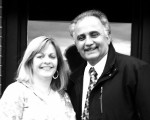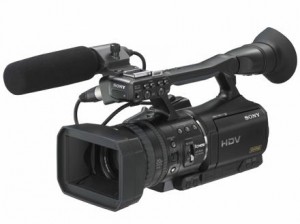 Photography has entered a whole new world, with remarkable changes in technology in just a few short years. One thing has not changed, however; the camera – not the computer – is still the most important tool of a good photographer.
Photography has entered a whole new world, with remarkable changes in technology in just a few short years. One thing has not changed, however; the camera – not the computer – is still the most important tool of a good photographer.
When the digital photography revolution began, it excited two groups of people. First there were the traditional photographers, who embraced the cost savings and convenience offered by digital photography. For them, it was a chance to do what they had always done, but to do it in a format more suited to the modern age.
Then there were the computer types, who perhaps didn’t know much about photography and weren’t very good at it. For these people, photography had entered their world in a big way. They may not have known much about art or technology, but they sure knew plenty about software. In this world, they were way ahead of traditional photographers who had grown up with SLR cameras, film and the darkroom.
So, does being good with software make you a good photographer? Of course not.
With software, you can achieve amazing things. You can do everything from tweaking the contrast in an image to moving objects around and making your photo look like it was a painting. But there are also plenty of things – essential things – that you can’t do. You can’t make an out-of-focus subject in focus. You can’t un-blur a moving subject that was blurred because the photographer used the wrong shutter speed.
Technical issues aside, there it also the great sense of honest satisfaction a photographer feels when they are able to capture a perfect image ‘in camera.’
In some industries, like advertising, the only thing that matters is the image; how you do it is irrelevant, as long as you produce the result. But for the ‘average Joe’, photography is about capturing memories, to revisit and share with others.
I am not suggesting software has no place in photography. In fact, even devoted digital fans recognize that most images need a little tweaking of saturation and contrast to bring them up to print quality.
The point is, software is no substitute for camera skills. It is great, perhaps even essential, to know how to work on a photo after the event. But that cannot take the place of learning how to use a camera, how to appreciate light and how to compose a great image.
Beginners beware; there are people out there who will hold you back by telling you that notions of aperture, shutter speed and ISO are outdated relics of film photography. In fact, by learning these photography essentials, you will develop skills that will reduce your reliance on computers to fix your mistakes.
The benefits? Well, first there is the satisfaction of knowing your picture was captured with your own skill and is a true reflection of the moment as it happened.
Need something more practical? Think about this. To produce a good image from a poorly taken photo can take hours sitting in front of a computer. How long does it take to get it right in the first place? About 1/500th sec.


